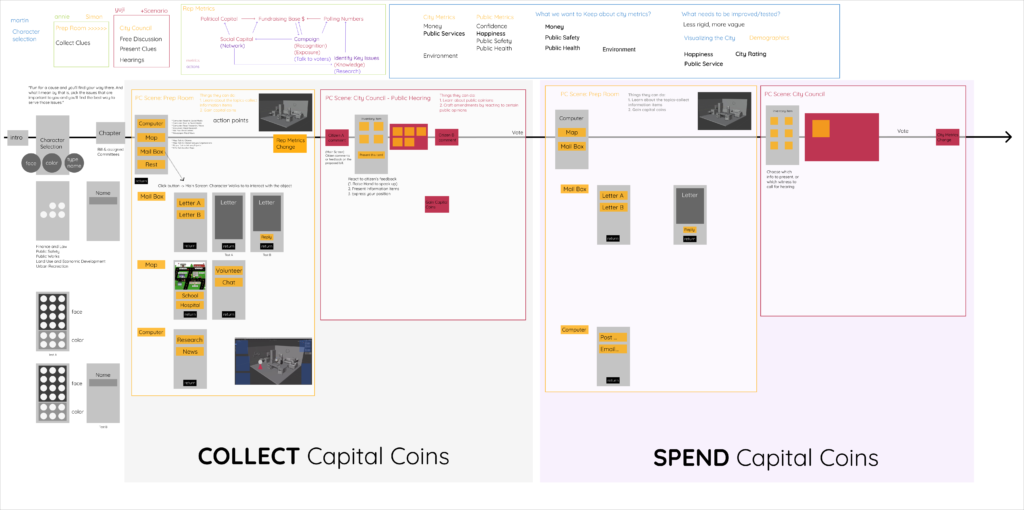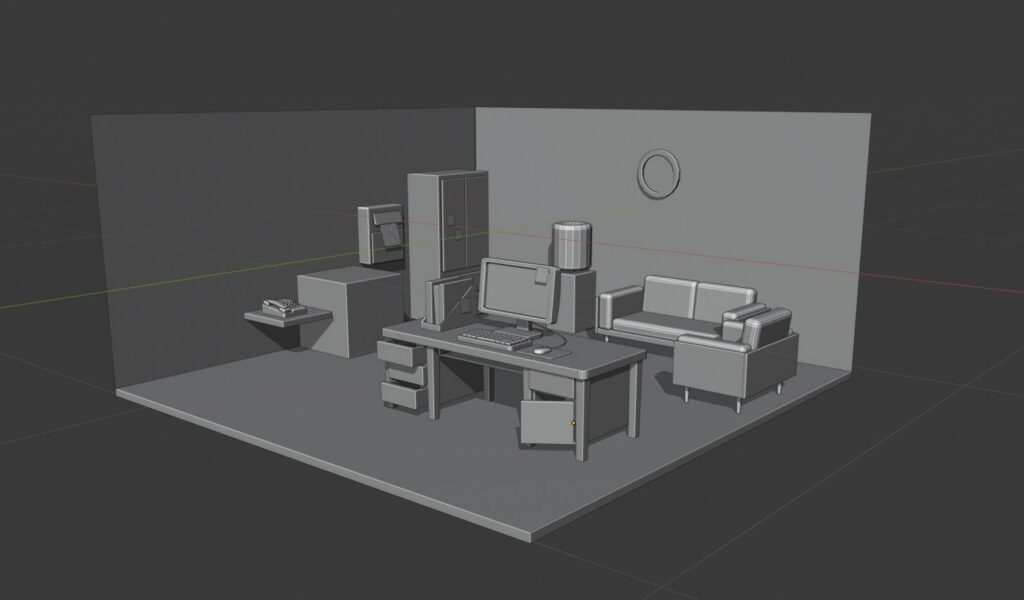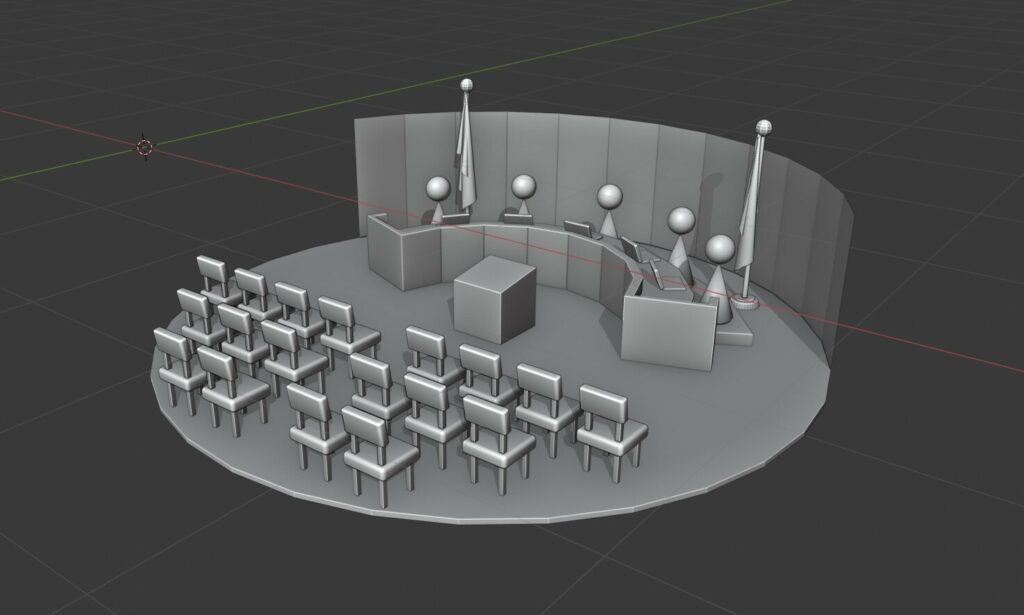Research
We started off the week by researching city council procedures. Some questions we had were…
What does the city council’s legislative process look like?
The city council legislative process can be separated into roughly 5 steps
1. Bill Introduction
Council Members work with Legislation Division to craft a bill that is introduced at stated meetings, where is it assigned to the appropriate committee
2. Public Hearings
The committee will hold a public hearing on a bill to obtain feedback from the public and other government entities who may be affected by the bill. This may result in amendments to the bill
3. Voting
The Committee votes on the bill. If the bill passes the Committee by majority vote, the bill is then sent to the full Council where it will be considered and voted on at a Stated Meeting. The bill must again pass by majority vote.
4. Mayoral Decision
After a bill is passed by the Council, it is presented to the Mayor, who has 30 days to either sign the bill into law, veto the bill or take no action. If the Mayor vetoes the bill, it is sent back to the Council. If this happens, the Council can override the Mayor’s veto with a 2/3 vote. If the Mayor doesn’t sign or veto the bill within 30 days, it becomes law.
5. Bill becomes Law
Once a bill is signed by the Mayor (or its veto has been overridden by Council), it’s then added to the City Charter or Administrative Code.
What does a city council meeting look like?
City Council Meetings can be divided up into roughly 8 steps
- Presentation of petitions, letters, memorials, remonstrances, proclamations, and ordinances, which may be referred to the appropriate committees, or otherwise disposed of, without debate.
- Public Comments: Comments from residents and taxpayers.
- Presentation of papers: Council members propose bills and amendments.
- Unfinished business.
- Reports from standing committees.
- Reports from special committees.
- Motions and resolutions: A council member may decide to motion to the president, and begin a discussion / debate on a topic/bill.
- Reading, correction and approval of the minutes of previous meeting or meetings where the same may not have been .
Takeaways
Some of the main takeaways we got from our research are the following
- Research and feedback gathering are mostly done by the various committees, the city council mainly proposes and votes on legislation.
- Public Hearings are one of the key ways for citizens to be civically engaged with their local government.
- Actual City councils have multiple pieces of legislation at different stages of the process moving at the same time, which means their meeting structures are designed to allow for different topics to be introduced, voted on, and delegated efficiently. They are not designed for debates.
- For our experience, we will have to analyze and deconstruct the legislative process and the city council meeting structures so that it better helps CivRep achieve its goals.
Another topic we researched was,
What makes a good representative?
After doing some research, some of the takeaways we had were:
Powerful web of political and social networks
Successful representatives have whole ecosystems of allies and supporters who they can count on for political and social help.
Ability to determine and articulate issues that are relevant and important to voters
Good representatives have the ability to identify problems that matter the most to the voters, and understand how to articulate them to spread their message to a bigger audience.
Have a big wallet (or access to somebody else’s big wallet)
In order to be elected, representatives need to run a successful campaign. And to run a successful campaign, you need money. A lot of money. Successful representatives usually have a pile of money to finance their campaigns, or know where to go to get the money they need.
Have brand recognition
Lastly, good representatives have the renown and fame needed to gain traction for their
Design
Following our research, we began to design our next prototype, with the goal of playtesting it during the weekend before halves.
Some of the new things we had to consider in our design were:
Shift focus of game from Creating a better city to Becoming a better representative
In our previous prototypes, the goal of the game had been to vote on bills in order to make your city the best it could be. However, following our last meeting with our client, we discovered that CivRep should focus more on the city council members, and show how they could be better representatives.
Find a significant motivator for people to take specific initiatives
In our previous playtest, we found that including citizen letters to representatives was something that guests found engaging and inspiring. Building on this, our team wanted to discover what we could do in CivRep to motivate guests to take these civically engaging behaviors in real life. In our design, we decided to include even more citizen perspectives such as public hearings and chats with citizens.
Experiment with translating multiplayer game behavior into a single player app
Lastly, we wanted to begin the process of translating the multiplayer prototypes we already had into a single player experience by experimenting with automating some features of the game.
Game Flow
We created a new game flow for CivRep by deconstructing real life city council meetings and incorporating the parts that were most relevant to our transformational goals.

Intro
In the intro, we welcome the players into the game and conduct a quick onboarding where we explain who they are and what they will be doing. After being introduced to the bill they will be voting on, guests will select their character and move on to scene 1.
Scene 1 (Prep Room)
In scene 1, guests will be in the prep room, which is akin to their office. Here, they will have access to things such as mailboxes full of letters from citizens, maps showing where they could visit in the city to talk with people and organizations, and a computer where they can gather information from the internet.
Scene 1 will be where guests prepare for the upcoming scenes where they must argue their position and ultimately vote on the bill.
Scene 2 (Public Hearing)
Scene 2 will be a public hearing, where guests will be able to receive feedback on the bill from various citizens and experts.
Scene 3 (Prep Room)
Guests will be back in their prep room for scene 3, although this time instead of gathering info, they will be gathering support for their position by raising awareness and organizing movements.
Scene 4 ( City Council Voting Session)
Finally, in scene 4 guests will be able to hold one last discussion before voting on the measure.
Representative Metrics
In order to facilitate more roleplaying as representatives, we came up with something called representative metrics, which look like the following:
One feedback we got from previous playtests was that the city metrics did not feel interactable enough, so we designed the representative metrics to be more dynamic and affected by the decisions made by the players.

Lastly, here are a couple of scenes from our artist Simon!

